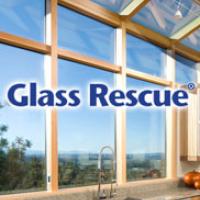Date: 11 May 2015
If electrostatically charged, they adhere to surfaces charged with the opposite polarity during application, forming a paint layer after curing. However, the challenge here is to ensure an even coating of materials with different conductivity levels, where for instance the outer and inner shells of a metal frame are joined to an insulating bar made of plastic.
.jpg)
Electrically charged paint particles are attached by the electrostatically modified insulbar ESP insulating profile
Plastics specialist Ensinger has developed its insulbar ESP insulating profile made of electrostatically optimized material specifically for what is known as "coating in the finished assembly". The plastic TECATHERM 66 ESP attracts the paint particles more effectively than conventional less conductive polyamide, so ensuring a more even paint layer. Particularly in the case of metal constructions with visible thermal insulating profiles, and when working with non-standard solutions whose design makes them difficult to coat, insulbar ESP ensures excellent optical appeal and quality.
.jpg)
Spraying the electrically charged paint powder on a window frame profile (Picture: Wicona)
Optimized for coating in the finished assembly
"For our customers, the facility for coating in the finished assembly means considerable process and cost optimization", explains Frank Killinger, Head of Sales for insulbar at Ensinger. “Time-consuming and expensive additional work steps such as foil covering of already painted aluminium shells to protect the surfaces during manufacture of the assembly is no longer necessary. Any optional quantity of assembled profiles can now be produced in advance, with colour selection and painting taking place at a later date. This simplifies stocking and at the same time guarantees maximum colour diversity".
To allow optimum paint adhesion, Ensinger offers insulbar ESP insulating profiles which have been additionally dust blasted. Dust blasting increases the surface tension to around 70 mN/m by roughening. As a comparison: Conventional polyamide 66 profiles have a surface tension of around 30 mN/m, while for reliable paint adhesion the recommended surface tension is over 50 mN/m.
Like all other insulbar insulating profiles, insulbar ESP profiles are capable of withstanding curing processes of up to an object temperature of 200°C without damage.
.jpg)
Painted assembled profile with insulbar ESP thermal insulating bar
.jpg)
Dust blasting the insulbar ESP insulating profile increases the surface tension of the polyamide bar, guaranteeing durable paint adhesion.
For more information, go to the website: www.insulbar.de/en
Pictures in high quality: press.info@oha-communication.com
About insulbar
Ensinger GmbH is among the world's leading developers and producers of insulating profiles for window, door and facade construction. The profiles marketed under the brand name insulbar® create a thermal separation between the inside and outside shells of metal frames. Insulation systems using insulbar profiles achieve optimum values in terms of energy savings and cutting the cost of heating and cooling. At the same time, insulbar profiles comply with the most stringent quality standards in every respect. They have been in successful operation around the world for over 30 years. For more information, go to www.insulbar.de/en
Press contact and additional information:
Karin Skrodzki
Public Relations insulbar
Tel.: +49 7032 819 -674 • E-Mail: k.skrodzki@de.ensinger-online.com
About Ensinger
The Ensinger group is engaged in the development, manufacture and sale of compounds, semi-finished materials, profiles and technical parts made of engineering and high performance plastics through extrusion, machining and injection moulding. With a total of 2,200 employees at 28 locations, the family-owned enterprise is represented worldwide in all major industrial regions with manufacturing facilities or sales offices.
Mr. Joerg Franke, Ensinger GmbH
Phone: +49 . 7032 / 819-202
j.franke@de.ensinger-online.com

























Add new comment